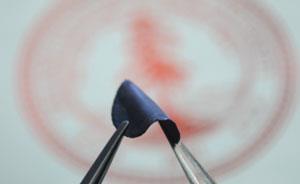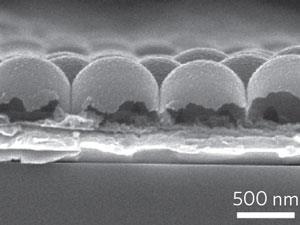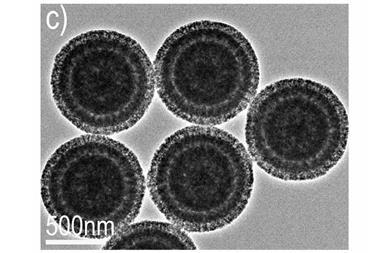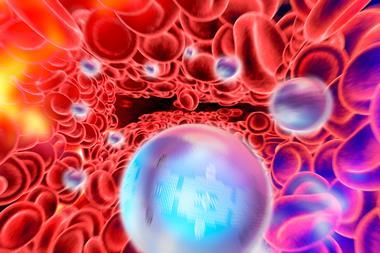Protective carbon nanosphere coating overcomes lithium problems, pointing the way to improved capacity

A lithium-ion battery is charged by driving lithium cations on to the anode, where they are stored as neutral atoms until the battery is discharged. The ideal anode would be lithium metal, but this can react with liquid electrolytes, damaging the battery and giving out dangerous amounts of heat. It also expands hugely and non-uniformly during charging, forming large growths called dendrites that can short-circuit the battery and cause explosions. As a result, manufacturers use lithium intercalation compounds, most commonly LiC6.
Multiple research groups have designed coatings to protect a metallic lithium anode from the electrolyte while still allowing lithium ions through, but these usually crack as the electrode expands. This exposes the bare lithium underneath, which quickly reacts with the electrolyte and forms pits, making the electrolyte unstable and causing the battery to wear out quickly.

Jiguang Zhang, a lithium battery expert at the US Pacific Northwest National Laboratory, says: ‘I think the principle is very important.’ Nevertheless, he cautions that the present production method is not scalable to industry, and the power output is 10 times too low for real lithium batteries. ‘From a laboratory scale proof of concept to a real battery application, I think they have some work to do,’ he says. Cui suggests it may be possible to mass produce the coatings using printing technology, and says the team have now achieved stable operation at 2–3mA/cm2 and are currently working on increasing this.












No comments yet